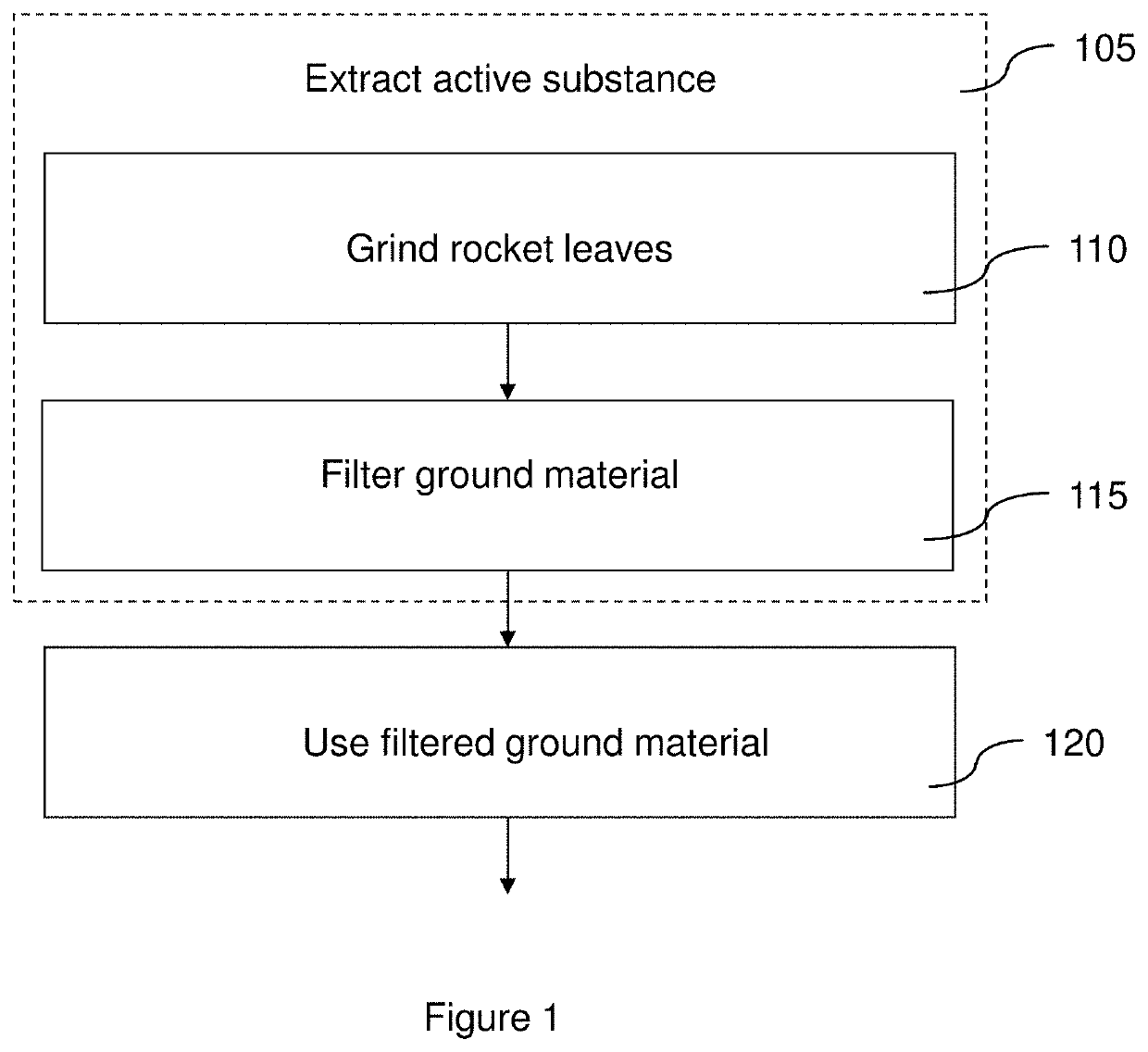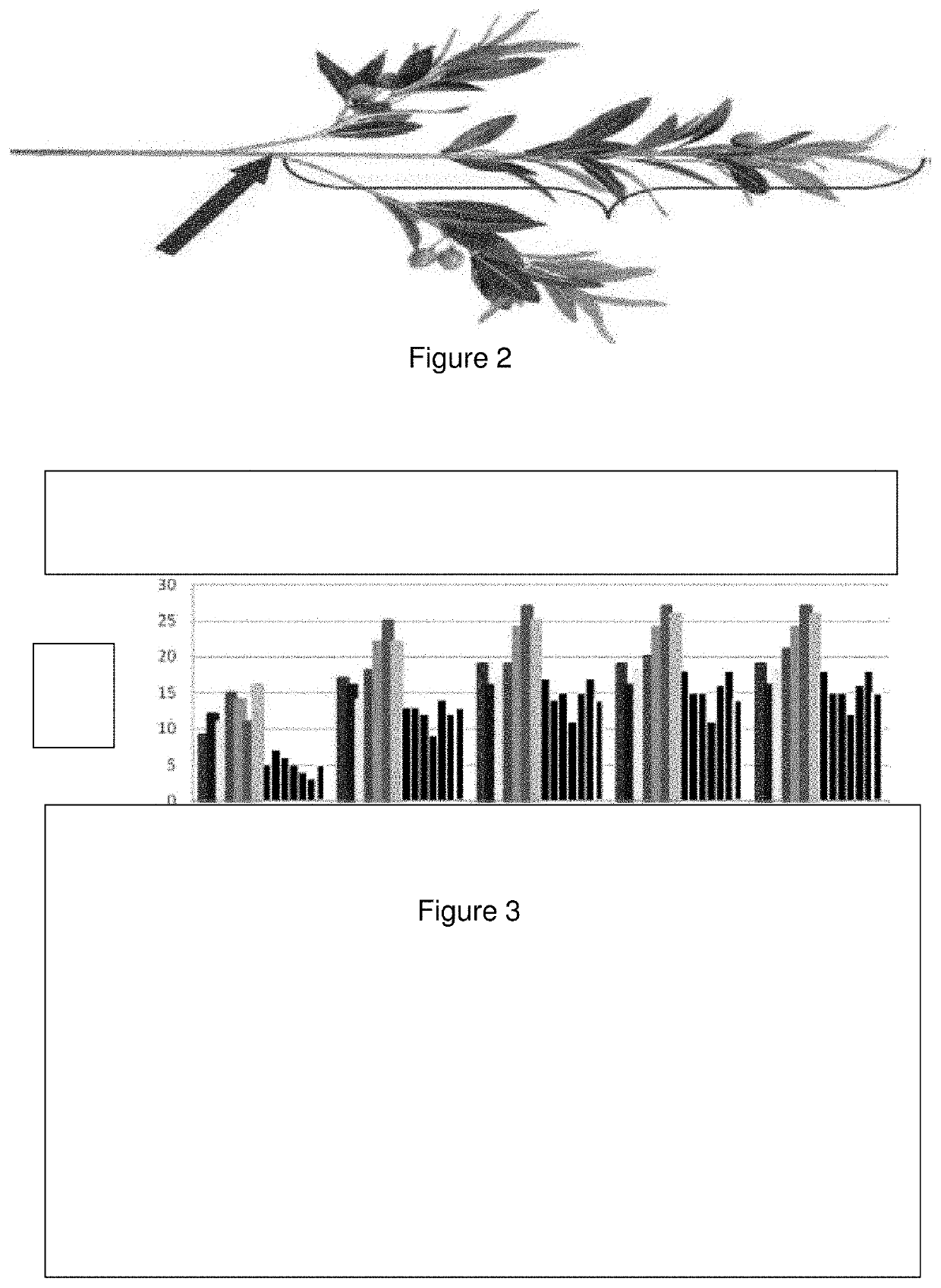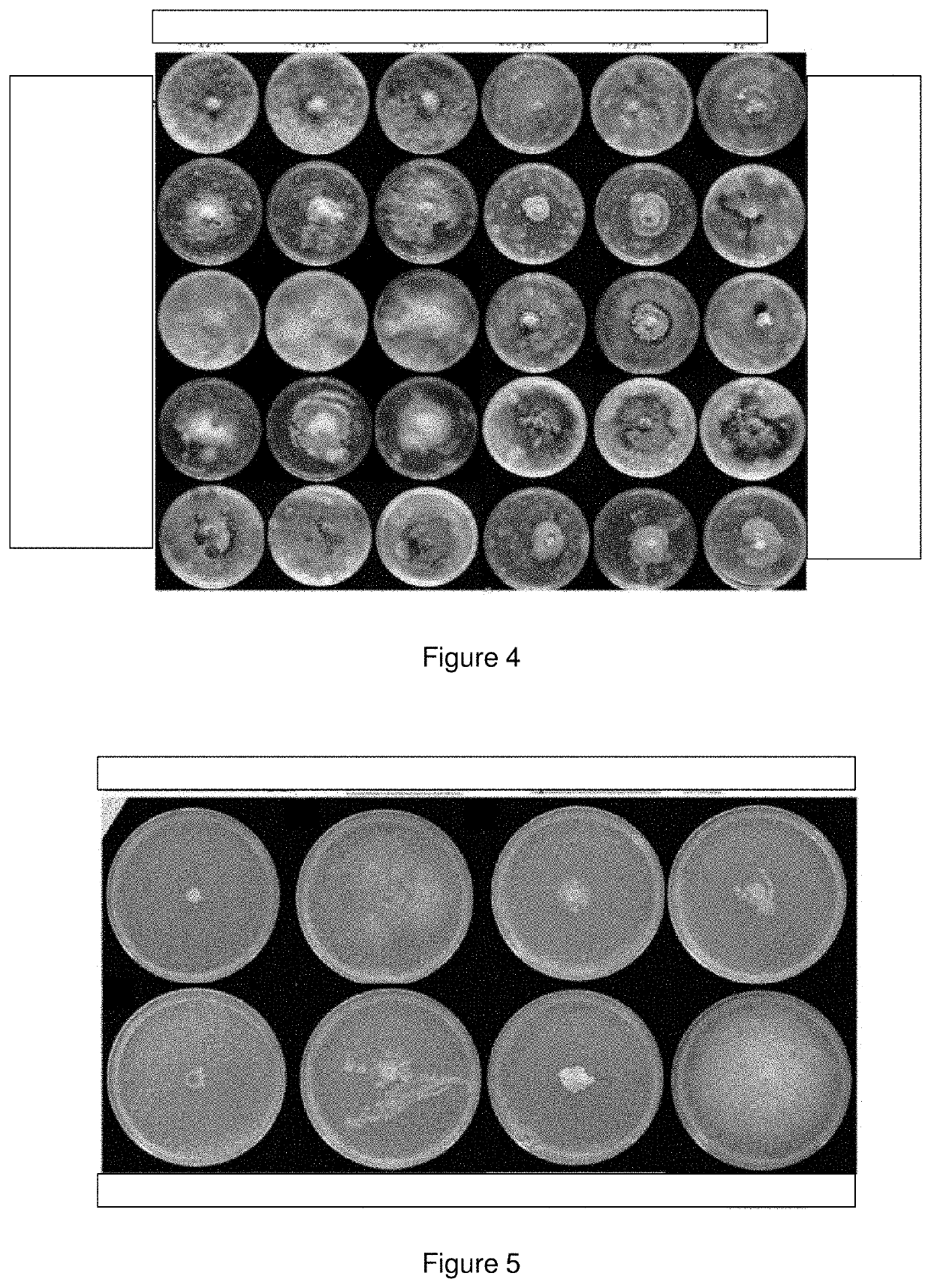Use of an extract of part of a rocket plant for stimulating the defenses of plants and trees and associated composition and method
a technology of rocket plant and extract, which is applied in the direction of watering devices, horticulture, agriculture, etc., can solve the problems of increasing resistance of society to bear the burden of ecological and health costs, increasing the difficulty of commercial biopesticide production, and increasing the cost of approval
- Summary
- Abstract
- Description
- Claims
- Application Information
AI Technical Summary
Benefits of technology
Problems solved by technology
Method used
Image
Examples
example 1
f Antibacterial and Antifungal Effects
[0132]To test the antimicrobial effect of PP1, the effect of PP1 was evaluated on the growth of six microbial strains:
[0133]Bacteria: Burkholderia cepacia, Pseudomonas cichorii, Pseudomonas fluorescens
[0134]Molds: Altemaria alternata, Aspergillus brasiliensis, Aureobasidium melanogenum (formerly A. pullulans).
[0135]The sample analyzed is the ready-to-use PP1 product, at the dosage of use.
[0136]Experimental Conditions:
[0137]The protocol followed is based on the European Pharmacopoeia—9th edition § 5.1.3. Effectiveness of the antimicrobial preservation.
[0138]The sample was filtered at 0.22 μm and kept refrigerated before use.
[0139]The strains studied are detailed in the following table of the composition of the inocula:
microorganismsreferencesBacteriaBurkholderia cepaciaDSM 7288Pseudomonas cichoriiDSM 50259Pseudomonas fluorescensDSM 50090Yeasts / moldsAlternaria alternataDSM 620 10Aspergilus brasiliensisDSM 1988Aureobasidium melanogenumDSM 2404
[0140...
example 2
tion of the Absence of Erucin in the PP1 Extract
[0169]In rocket (Eruca sativa Mill and Diplotaxis tenuifolia L.), glucoerucin is a glucosinolate found in high concentrations, which can be hydrolyzed to Erucin.
[0170]As indicated earlier, isothiocyanates (ITC) are the products of the reaction of plant glucosinolates with myrosinase, an enzyme released by the disintegration of plant tissues.
[0171]This myrosinase-glucosinolate system is present in plants of the Brassicaceae family, such as rocket. ITCs are volatile substances that exercise an inhibitor effect on a large number of pathogenic microorganisms at low concentrations, which makes them promising antimicrobial candidates (Dufour et al., 2015). The natural isothiocyanates closely linked to sulforaphane (SF) have already been shown to have a bactericidal effect (erucin, berteroin, hirsutine, phenethyl isothiocyanate and allysine) (Wittstock and Gershenzon, 2002; Fahey et al., 2013). For example, Ganin (2013) found that sulforaphan...
example 3
[0263]The elements showing the effectiveness of the product that is the subject of the invention against Xylella fastidiosa on olive plants are given below. With the aim of making the description easier to read and shorter, only the elements relating to olive trees are given below.
[0264]In FIGS. 3 and 6 to 11, the vertical bars represent, from left to right, table data running from top to bottom. Therefore, for each date, the left-most seven vertical bars relate to the treated trees, and the right-most seven vertical bars to the “control” trees.
[0265]The results shown below were obtained with the product of the present invention during a first trial on olive trees infected with X. fastidiosa, in a declared quarantine area (official decision of the Italian authorities). The experiment consisted of six treatments with the product on the following dates:[0266]September 3[0267]September 16[0268]September 26[0269]October 5[0270]October 31 and[0271]November 12.
[0272]Data was collected in ...
PUM
 Login to View More
Login to View More Abstract
Description
Claims
Application Information
 Login to View More
Login to View More - R&D
- Intellectual Property
- Life Sciences
- Materials
- Tech Scout
- Unparalleled Data Quality
- Higher Quality Content
- 60% Fewer Hallucinations
Browse by: Latest US Patents, China's latest patents, Technical Efficacy Thesaurus, Application Domain, Technology Topic, Popular Technical Reports.
© 2025 PatSnap. All rights reserved.Legal|Privacy policy|Modern Slavery Act Transparency Statement|Sitemap|About US| Contact US: help@patsnap.com



